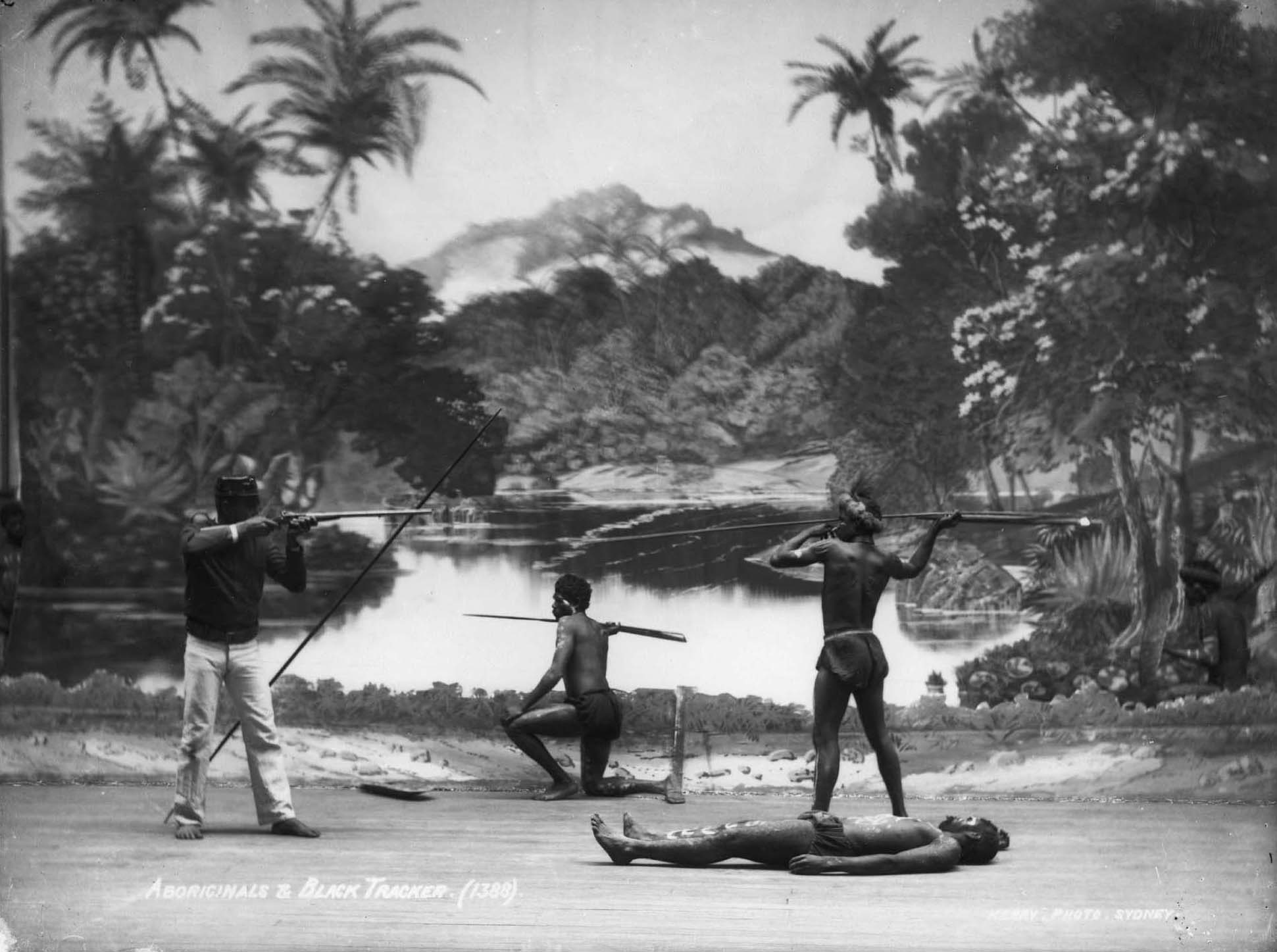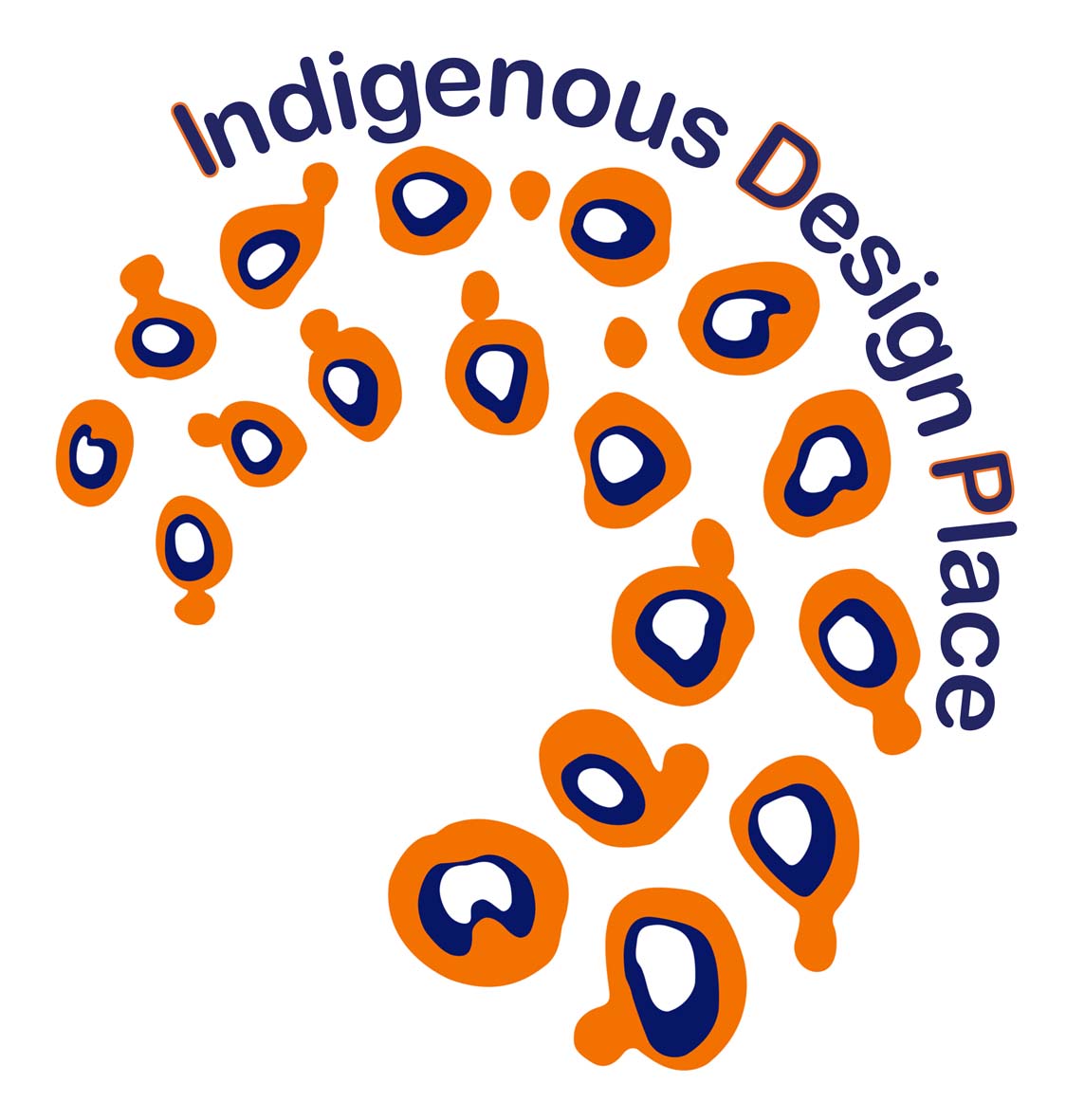How Meston's 'Wild Australia Show' Shaped Australian Aboriginal History
Prof Paul Memmott (Chief Investigator, University of Queensland), Dr Maria Nugent (Chief Investigator, Australian National University), Dr Timothy O’Rourke (Chief Investigator, University of Queensland), Ms Lindy Allen (Partner Investigator, Museum Victoria), Dr Charlotte Smith (Partner Investigator, Museum Victoria), Dr Chantal Knowles (Partner Investigator, Queensland Museum), Mr Richard Neville (Partner Investigator, State Library of NSW).
 Photograph taken by the Kerry Studio in Sydney c.1893.
Photograph taken by the Kerry Studio in Sydney c.1893.
The Wild Australia Show (1892-93), staged by a diverse company of Aboriginal people for metropolitan audiences, provides the focus for an interdisciplinary study of performance, photography, collections and race relations in colonial Australia. Using archival and visual records, and in partnership with key cultural institutions and Indigenous communities, the research seeks to produce an authoritative and original interpretation of the Show situating it within local, national and transnational narratives informed by contemporary Indigenous perspectives. It aims to illuminate Aboriginal agency in the ensemble, reconnect Aboriginal kin to performers, and chart changing concepts of race at a critical juncture in Australian history.
This project aims to contribute new perspectives on Aboriginal history, & how public perceptions of Aboriginal people were shaped by influential colonial figures and contemporary politics; and to illustrate the impact of the Show on socio-economic policies, & the flow-on effects for Indigenous Australians. This research seeks to redress known knowledge gaps in Aboriginal history, performance and culture, & reconnect descendants of the troupe members, thereby contributing to spiritual wellbeing.
For more information read the project summary.
Understanding the importance of architectural design for improving Indigenous experiences of health care
Prof Paul Memmott (Chief Investigator, University of Queensland), Prof Michele Haynes (Chief Investigator, University of Queensland), Dr Timothy O’Rourke (Chief Investigator, University of Queensland), Dr Bernard Baffour (Chief Investigator, University of Queensland).
The significance of cross-cultural design principles and practice is recognised for particular building types but poorly understood in healthcare architecture, despite the untenable state of Indigenous health in Australia. Preliminary evidence suggests that anxiety about the use of hospitals and clinics can result in the late presentation of Indigenous patients needing different types of health care. Across a range of institutional scales and healthcare settings, this research aims to understand how the design of particular settings affect Indigenous people’s perceptions, experience and use of hospitals and clinics. Developing innovative and adaptable research techniques, we are involved in a new ARC Discovery Project concerned with establishing the planning principles and architectural qualities that lead to improved Indigenous healthcare participation, user experience and health outcomes, reducing the disparity in health for the most marginalised Australians.
The goal of this research project is to improve the experience and use of healthcare architecture for Aboriginal and Torres Strait Islander people. Our aim is to identify the best design principles and practices through an analysis of existing clinics and hospitals and surveys of Aboriginal and Torres Strait Islander users. The research will follow a multidisciplinary approach combining mixed methods from architecture, sociology and anthropology and seek to address the following questions: How can we use culturally appropriate service provision to help Indigenous people feel comfortable in their waiting, consulting and sleeping settings? What is the relative impact of alienating hospital environments and socially uncomfortable settings on causing discomfort and stress for Indigenous clients or patients, in relation to other identified barriers? What are Indigenous behaviour practices and how do they conflict with conventional healthcare environments, contributing to poor health in Indigenous people? What is the impact of health setting architectural spaces on supporting Indigenous people’s wellbeing? What are Indigenous people’s own cultural understandings of their difficulties in engaging with mainstream settings?
For more information read the project summary.
Ms Carroll Go-Sam (University of Queensland), Dr Cathy Keys (University of Queensland), Prof Jane Hunter (University of Queensland), Prof Michele Haynes (University of Queensland), Prof Paul Memmott (University of Queensland).
This proposal involves a collaboration between the University of Queensland and the Queensland Department of Health, which aims to investigate the application of a novel data analytics framework to perform epidemiological analyses and quantify relationships between hotspots of health issues in ATSI communities (COPD, asthma, pneumonia, cancer, diabetes) and household and environmental variables (water quality, air quality, building materials, poor housing conditions) in Queensland.
The proposed project builds on an existing online system called Midja, which has been developed over the last three years via an ARC Indigenous Discovery grant (ARC IN14010003). Midja is a combined GIS and statistical data analysis system that integrates disparate datasets related to ATSI communities and supports spatio-statistical analyses down to the ILOC (Indigenous Location) unit of Indigenous geography. This project will extend Midja by incorporating relevant data sets from the Qld Dept of Health, Qld Dept of Environment and Heritage Protection and other sources, to improve our understanding of how regional environmental factors relate to hotspots of health issues in ATSI communities across Queensland.
From illustration to evidence in native title: the potential of photographs
Mr Michael Aird (First Investigator, University of Queensland), Prof David Trigger (Chief Investigator, University of Queensland), Prof Paul Memmott (Chief Investigator, University of Queensland).
This project aims to evaluate the potential of historical photographs as evidence in native title claims to assist understanding of cultural continuities and changes in Aboriginal connections with place. Its significance is founded on developing an innovative methodology to document the evidentiary values of large photographic collections of Aboriginal people in southeast Queensland and northern New South Wales. The study will seek to identify the photographed subjects and the locations and circumstances of their images being recorded. The significance of the photographic archive for contemporary Aboriginal people will be addressed, drawing on literature in photographic theory, anthropology and Indigenous studies.
This project will make a significant contribution to evaluating the evidentiary values of historical photographs in a study of great relevance to Aboriginal people seeking recognition of their forebears’ connections to land and place. The study promises to throw light on how photographs that are currently under-used in native title claims may reveal significant information about historical continuities and changes, regional patterns of mobility and connections to country over time.
